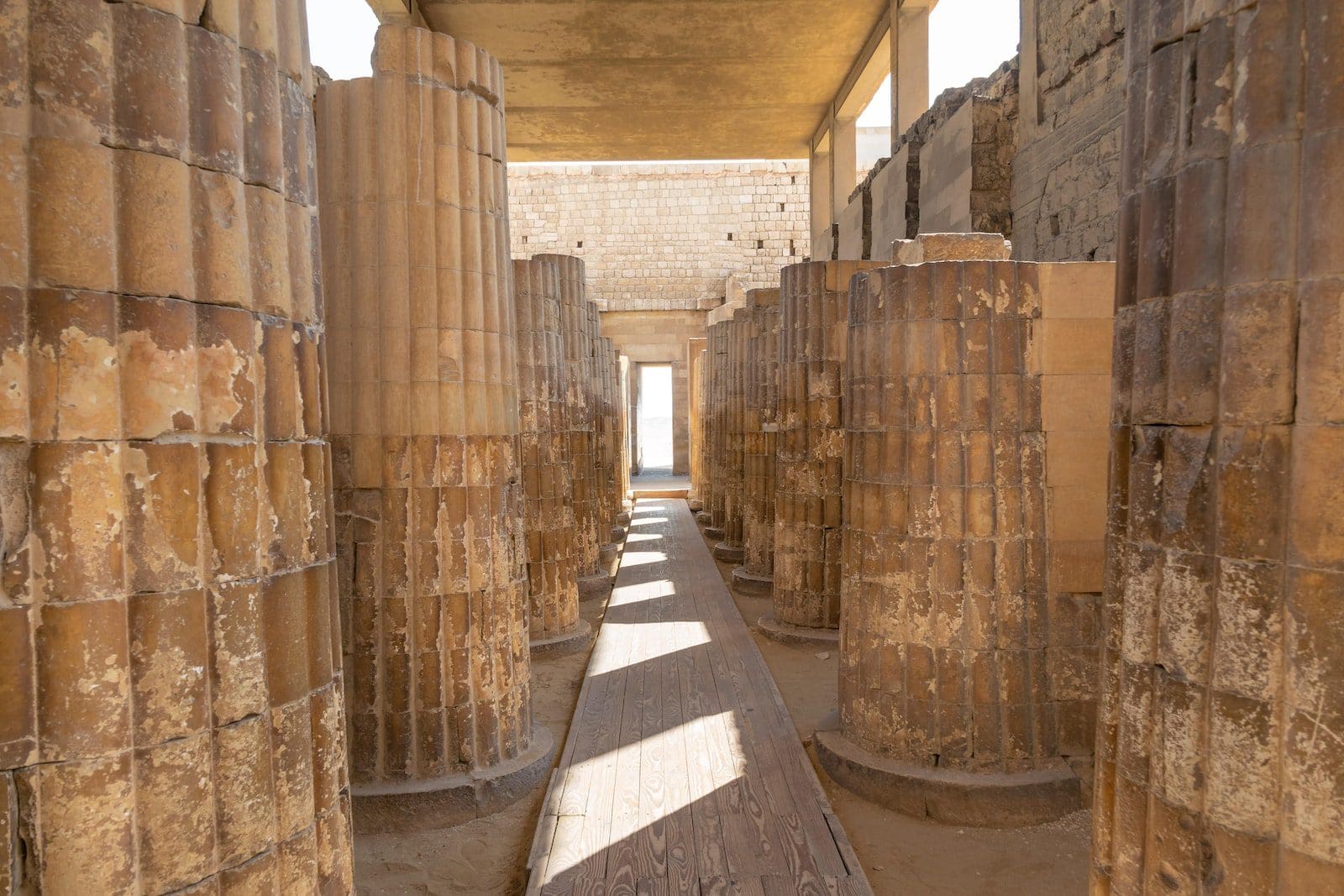Ancient India was quite different from India today. Instead of the States, it had dynasties that prevailed all over the country.
Many influencers and rulers came forward and established several empires. The epitome of power was solely concentrated in a single body.
Two of the best-known empires of that time are the Mauryan and Gupta Empires.
Key Takeaways
- Mauryan and Gupta Empires are ancient Indian empires that ruled during different periods.
- The Mauryan Empire was founded by Chandragupta Maurya in 322 BCE, while Sri Gupta founded the Gupta Empire in 240 CE.
- The Mauryan Empire was known for its centralized government, military power, and religious tolerance, while the Gupta Empire was known for its cultural achievements in art, literature, and science.
Mauryan Empire vs Gupta Empire
Mauryan was an empire founded by Chandragupta Maurya. It was formed before Christ. It was established in various countries. In the Mauryan empire, all the power belongs to the king. Sri Chandragupta was the founder of the Gupta Empire. It was formed after Christ. It was established within India. The reason for their fall is military issues.

The Chandragupta Maurya established the Mauryan empire over the Indian subcontinent. The Mauryan dynasty prevailed before Christ and followed centralized administration.
Chanakya played an important role in the Mauryan empire and assisted Chandragupta in organizing the dynasty. The empire had its capital in the city of Pataliputra, which is known as Patna in India today.
In contrast, the Gupta Empire was established by Sri Chandragupta across major parts of India. It prevailed after the death of Christ and prioritized decentralized administration.
Kalidasa was rewarded with an insane amount of funds during this time. Just like the Mauryans, the Gupta dynasty had its capital in Pataliputra.
Comparison Table
| Parameters of Comparison | Mauryan Empire | Gupta Empire |
|---|---|---|
| Founder | Mauryan empire was formed by Chandragupta Maurya. | Gupta empire was formed by Sri Chandragupta. |
| Existence | It came into existence before Christ. | It came into existence after Christ. |
| Time-period | Starting from 325 BCE, it existed until 185 BCE. | It existed starting from 320 CE till the 4th and 5th century. |
| Extent | It was larger and established over India, Afghanistan and Pakistan. | It was comparatively smaller and was established over major parts of India only. |
| Power | All the powers were with the ruling king. | The king did not have direct control here. |
| Taxation | Heavy taxes were imposed on the people. | People here did not have to pay heavy taxes. |
| Religion | They followed Jainism and Buddhism. | They followed Hinduism. |
| Culture | It was mainly based on Persian influence and monasteries. | It included art, science, literature etc. |
| Trading | They involved in foreign trade. | They went with internal trade. |
| Fall | The empire fell due to issues after Ashoka’s death. | It fell due to military issues. |
What is Mauryan Empire?
The Mauryan empire has left an extraordinary mark on Indian society. The vast, autocratic dynasty continues to maintain a unique place in the history of the Indian subcontinent.
The Mauryan empire was established by the great administrator Chandragupta Maurya and flourished between 325 BCE and 185 BCE. It covered all parts of India, along with Pakistan and Afghanistan.
Chanakya was the one who assisted Chandragupta in making the empire more efficient and organized. The process of building the empire started by dethroning the Nanda dynasty.
Pataliputra was then made the capital of the newly formed dynasty. A centralized administration, i.e., a ruler having all the powers over the people, was finalized and followed.
The Mauryans never accepted the Hindu religion. They mainly practiced Buddhism and constructed several Buddhist monasteries.
Buddhist scriptures were also highly embraced. The cultural practices were a part of Persian influence.
Foreign trade was very common and highly in demand in those times.
However, after the demise of Ashoka, the empire started facing issues. There was no one as efficient to manage such a huge dynasty.
The Pushyamitra Sunga took advantage of it, and this further resulted in the fall of the vast Mauryan empire.

What is Gupta Empire?
After the Mauryans, the Gupta Empire is known to be one of the hugest empires that ruled over Indian society in ancient times. The empire has set a remarkable footprint in the field of art and culture of the country.
Founded by Sri Chandragupta, the Gupta empire existed all through 320 CE till the 4th and 5th centuries. It was built over the major parts of India.
The empire followed a decentralized administration, where the ruler did not have direct control. Rather separate leaders were assigned for each part.
During this time, Kalidasa was highly praised and rewarded by the king due to his great work. Other details about the empire are mentioned in several documents created by Chinese travelers.
The Guptas embraced Hinduism and did put efforts to glorify the religion during their rule. Many Hindu temples with commendable architectural excellence were built.
The culture of the empire included art, science, medicine, and painting, which were regarded as very important and were commonly practiced. The people avoided foreign trade and stuck to internal trade only.
Unfortunately, with time, the empire was filled with several issues, including corruption, fragile leadership, and financial losses. This resulted in the fall of the empire, and Harsha Vardhana went on to establish the Vardhana empire over it.

Main Differences Between Mauryan and Gupta Empires
- Chandragupta Maurya established the Mauryan Empire, while Sri Chandragupta established the Gupta Empire.
- The Mauryan Empire was in power before Christ, whereas the Gupta Empire was in power after Christ.
- The Mauryan Empire was larger and covered more areas as compared to the Gupta Empire.
- The Mauryan king had all the powers, while the Gupta king did not have direct control.
- Mauryans followed Buddhism, whereas the Guptas followed Hinduism.
- The Mauryans levied heavy taxes on the common people, while the Guptas did not do so.
- Guptas involved in internal trade, while the Mauryans were frequently involved in foreign trade.
- https://www.researchgate.net/profile/Hasitha_Gunasinghe/post/Does_anyone_know_anything_about_Gana-Sanghs_kind_of_republics_in_ancient_India_Any_article_research_book/attachment/59d6295a79197b8077987dab/AS%3A335122910990341%401456910936980/download/2012-Shah.pdf
- https://www.ajhssr.com/wp-content/uploads/2020/09/Z2049218228.pdf

The Mauryan and Gupta Empires played pivotal roles in shaping ancient India, each leaving remarkable legacies through their distinct governance systems and cultural influences.
The richness of historical knowledge gathered from the Mauryan and Gupta Empires offers profound insights into the evolution of Indian civilization.
The Mauryan Empire’s Buddhist practices and the Gupta Empire’s emphasis on art and literature reflect the multifaceted cultural dimensions of ancient Indian civilization.
The profound impact of both empires on ancient Indian society is evident through the diverse cultural, religious, and administrative aspects they embodied.
The contrast between the Mauryan and Gupta Empires underscores the rich historical tapestry of ancient India, encompassing religion, governance, and cultural innovations.
The comparison table effectively highlights the contrasting aspects of the Mauryan and Gupta Empires, emphasizing their significance in ancient Indian history.
Exploring the historical narratives of both empires provides a comprehensive view of the diverse political and cultural landscapes of ancient India.
The legacy of the Mauryan and Gupta Empires indeed contributes to a deeper understanding of ancient Indian societal structures and governance systems.
The differences between the Mauryan and Gupta Empires are quite remarkable. It’s fascinating to learn about the centralized and decentralized administration systems they had in place, and how their time periods and extent differed.
The Mauryan Empire’s influence on Indian society is indeed noteworthy, while the Gupta Empire’s renowned accomplishments in art and culture are equally intriguing.
It’s interesting to see the comparison table highlighting the contrasting aspects of the two empires such as taxation, religion, and culture.
The historical accounts of the Mauryan and Gupta Empires epitomize the intricate societal structures and governance systems prevalent in ancient India.
The dichotomy between these empires showcases the dynamic historical evolution witnessed within ancient Indian civilization, underscoring their enduring significance.
The unparalleled legacies of the Mauryan and Gupta Empires continue to illuminate the diverse historical contours of ancient Indian civilization.
The profound historical insights gleaned from the Mauryan and Gupta Empires offer indispensable perspectives on the intricate historical fabric of ancient India.
The enduring impact of both empires resonates through the realms of ancient Indian politics, culture, and religious traditions.
The Mauryan Empire made a lasting impact with its centralized administration and religious practices, while the Gupta Empire’s contribution to art and literature is truly commendable.
It’s intriguing how the Mauryan and Gupta dynasties embraced different religions and cultural influences, shaping the diverse societal aspects of ancient India.
The detailed historical narratives of the Mauryan and Gupta Empires unveil profound insights into the multifaceted historical terrain of ancient India.
The historical resonance of the Mauryan and Gupta Empires illuminates the intricate cultural and political dynamics of ancient India, providing invaluable historical perspectives.
The comprehensive comparison between these empires accentuates their impactful contributions to ancient Indian history, encompassing governance, culture, and religion.
The Mauryan and Gupta Empires embody a wealth of historical knowledge, each contributing distinctive facets to the historical narrative of ancient India.
The Mauryan and Gupta Empires introduced different forms of governance and their impact on religion and culture were significant. The establishment and fall of both empires hold valuable historical lessons.
The administrative and cultural differences indeed shed light on the diverse historical landscapes within ancient India.
Exploring the distinct features of these empires provides a deeper understanding of the complexities of ancient Indian history.